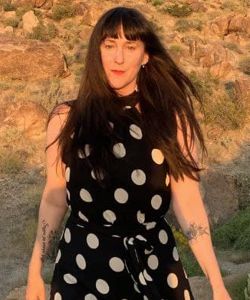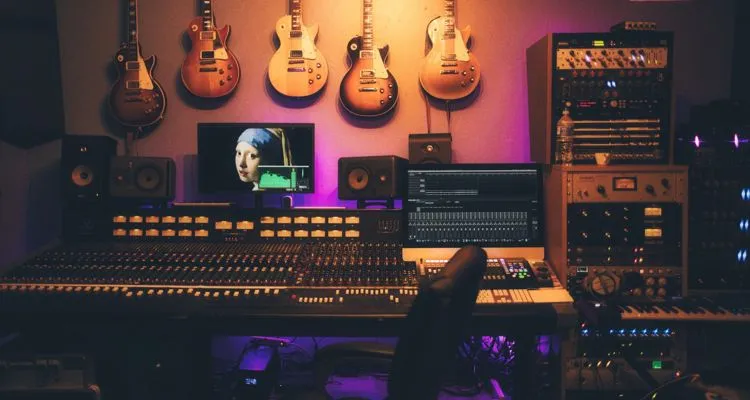Synchronization provides artists and composers with a new way to earn income from their music. But what makes music sync-worthy?
The following was created in collaboration with Songtradr, part of a broader partnership focused on the sync licensing space. Be sure to check our ongoing coverage of this fast-growing sector here.
Digital Music News recently sat down with three highly influential music supervisors and creative directors to discuss rising trends in the sync space. The COVID-19 pandemic has drastically changed this space across the globe.
Joining us today:
- Patrícia Portaro – Head of Music Supervision, LATAM, Big Sync Music
- Johanna Cranitch – Associate Creative Director, MassiveMusic North America
- Alexandra Carlsson Norlin – Music Supervisor, Big Sync Music
 |  |  |
| Johanna Cranitch | Patricia Portaro | Alexandra Carlsson Norlin |
Every artist looking to break into the music synchronization business has one burning question. “What kind of music should I make if I want to get sync deals?” Unfortunately, there’s not a simple answer to that question but rather a broad billboard to help steer you in the right direction.
What’s the most important aspect of creating a ‘syncable’ song?
Johanna: “The first ting I will say is that lyric content is really important when it comes to sync. Having lyrics that are universal, not too specific and can span many different situations. For example, having the feeling of love – but not necessarily romantic love. We look for a lot of things like that in music; that can evoke a specific feeling while being universal.”
Patrícia: “In general, music builds emotion. That’s what we normally look for. But I think that every project has a different music need. A song that works in a series like ‘Sex Education’ for example, is different from one that works in a Dove commercial or a drama series.
What is syncable in audio/visual has some degree of uncertainty. It’s more about what the project requires than anything else. Of course, there are some characteristics that make certain songs more syncable than others. When it comes to commercials, songs that have a lot of energy and inspiration. They also cannot be repetitive because a brand has to evoke a feeling in the audience in 30 seconds or less.”
Alexandra: “Music’s purpose is to tell a story, but this is a very difficult question to answer definitively – because a story can be anything. Storytelling is definitely the most important aspect of good music sync. A song that is a good fit for the situation will have a little bit of everything, especially so you can lean into the specific emotion that is being evoked.”
What are some of the trends you have experienced in music sync for 2021 and leading into 2022?
Johanna: “In terms of trends, I’m seeing a lot of nostalgia. It seems to be really coming back with a vengeance, especially since the pandemic. I think we’re looking back on times before 2019 with a fondness, when things were classic and simple. We’ve been getting a lot of requests for cover versions of well-known songs, or songs that are nostalgic in a sense, with a retro-sounding vibe. It’s kind of like we’re heading back into the garage rock era of music sync.”
“I think one of the biggest developing trends heading into 2022 is we’re looking at more of a throwback sound. TikTok has helped drive the revival of nostalgia that we’re seeing, especially with things like music for commercials. The Fleetwood Mac/OceanSpray video came about organically, but it’s exactly the kind of thing we’re seeing pop up.”
Patrícia: “The ‘syncable’ trend changes a bit depending on the territory. In Brazil, producers tend to be very local and use a lot of Brazilian songs. This is about the culture, but it also happens because of the conditions we live in at the moment. It makes the market use much more Brazilian music than anything else.”
“But I also think it’s important to talk about lyrics, because the lyrics are an important factor when we talk about what music is syncable or not. If the lyrics are too specific, they have fewer chances to be synced.”
Alexandra: “Happy emotions are always going to be big in sync, but people are stepping outside of the box now. They’re being a little bit more brave and willing to try things that maybe have not been explored in the past. There’s also more thought being put into being inclusive in this space, including more women and people who identify as non-binary.”
What do you like to hear in the music you’re considering for a sync project?
Johanna: “I think it’s important to have peaks and valleys and a wide dynamic range in music. It’s important for artists to consider the medium in which their music will be heard, too. We’re no longer just working with one audio format, with someone hearing the ad on the radio or television. You have to really think about a lot of different mediums when writing music for sync.”
Patrícia: “In my experience, songs about love are always easier to find a sync placement for. Because normally there is some kind of love story in the series of in the film, not necessarily romantic love, but other forms of love. Music that talks about love usually gets placed more frequently.”
Alexandra: “I think we’re still very much in the pop era, where everything has to be appealing to a broad audience. It can’t be too different from what broadly appeals to everyone. Uplifting music that builds and evokes a feeling will always have a place in sync.”
What genres of music are you surprised to see popping up in the sync business?
Johanna: “MoTown and Soul music are making a big comeback. Any music that evokes a feeling of nostalgia, in a sense. Music with guitar, bass, driving drums and with great production values will always be in demand.”
Patrícia: “Classical songs are also always present in our projects from the last five years. Maybe because classical music can be used in so many different situations. Also because you only pay for one right for the recording, not the copyright. So this is something that happens a lot.”
“We’ve also noticed an opening for more lofi music, something calm and relaxed. Before the pandemic, we hadn’t seen this trend before. Hip-hop, chill vibes, etc. – this kind of music was very rare to see before the pandemic.”
Alexandra: “It’s hard to say any specific genre or single element, again because the sync business is so broad. But it all leads back to the storytelling. If the storytelling is different, the music requirements for the brief change. It feels like maybe it’s more what’s in line with where a specific market is, or where it’s going.”
“You don’t want to try and use the traditional American sound everywhere; that’s not going to work. You want to be a bit more local and focus on what’s popular in a specific region.”
Do you have any tips for musicians who are looking to get into the music sync business?
Johanna: “Universal lyrics and modern production that pays attention to trends will always be important in the sync market. Any artist looking to break into this competitive space should be paying close attention to the ads that are playing around them. Pay attention to commercials on TV, the internet – everywhere. You’ll quickly learn what is hot and trending for marketing.”
Patrícia: “We see a lot of R&B artists appearing in Brazil, and in commercials, there have been many more R&B songs over the last few years. I don’t think the music necessarily has to be ‘pop’ anymore to be synced, but feeding into particular genres definitely increases your chances of success.”
Alexandra: “You have to be practical about your approach. You should have a shortlist of goals you want to achieve when you pitch music. If a music supervisor wants more from you, they’ll reach out. The chances of being hugely successful in sync are a lot smaller, especially when you’re writing for specific projects.”
So what are some of the driving music sync trends?
Johanna, Patrícia, and Alexandra have highlighted the need for many different types of music in the sync space. Pop trends remain king of broad appeal, but it’s interesting to see genres like hip-hop and R&B becoming more represented in the sync space than before. As noted by all three women, the COVID-19 pandemic has changed what works in the sync space with nostalgic sound specific to regions making a huge comeback.
Source; Digital Music News







